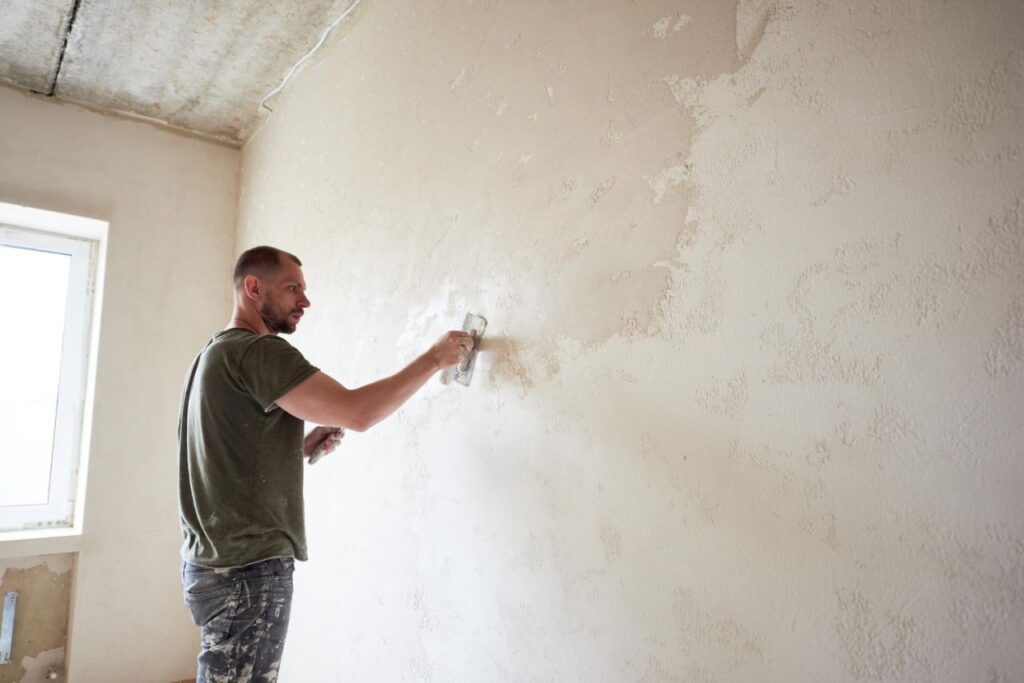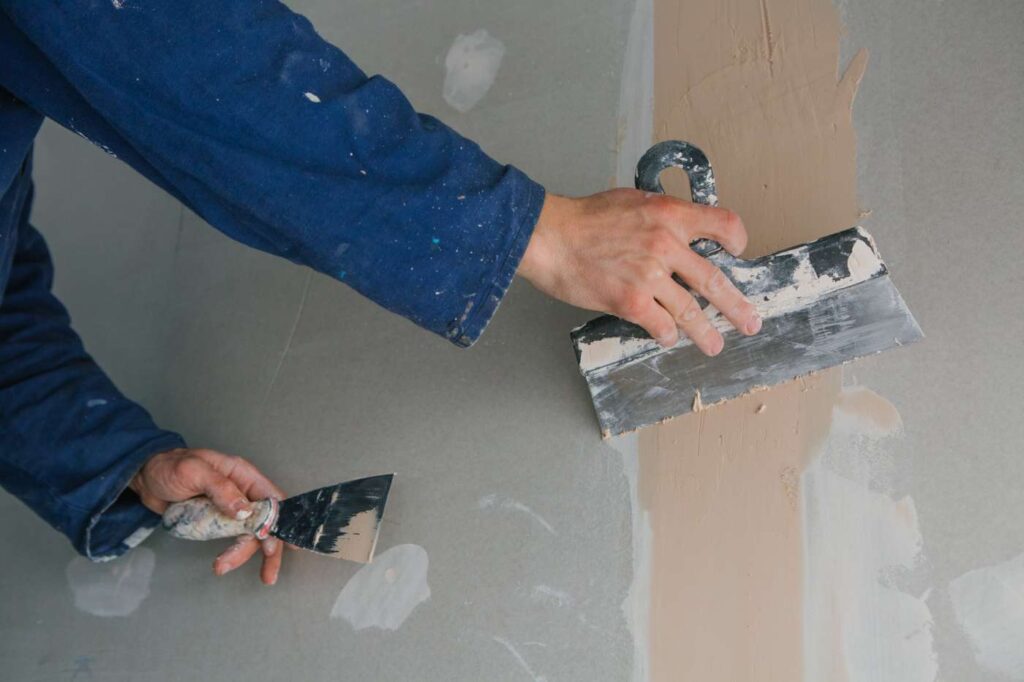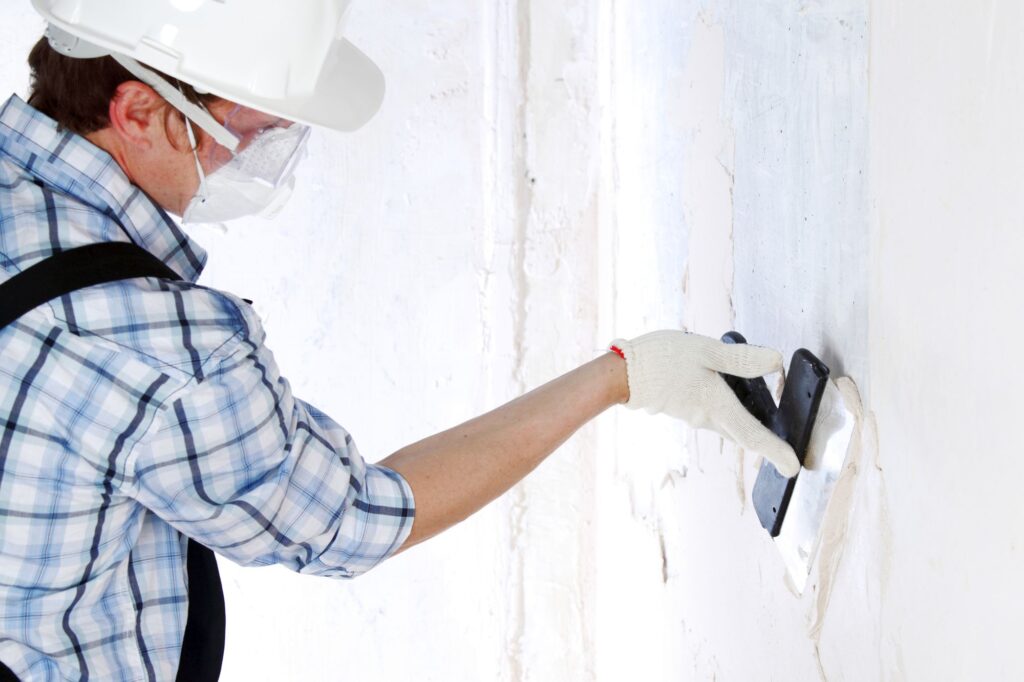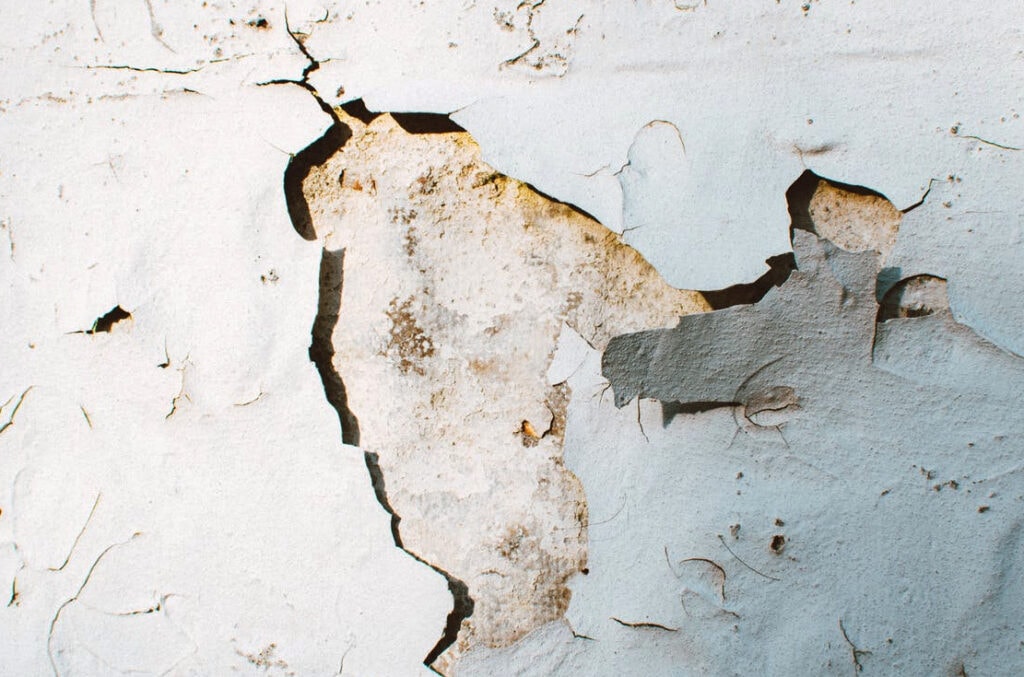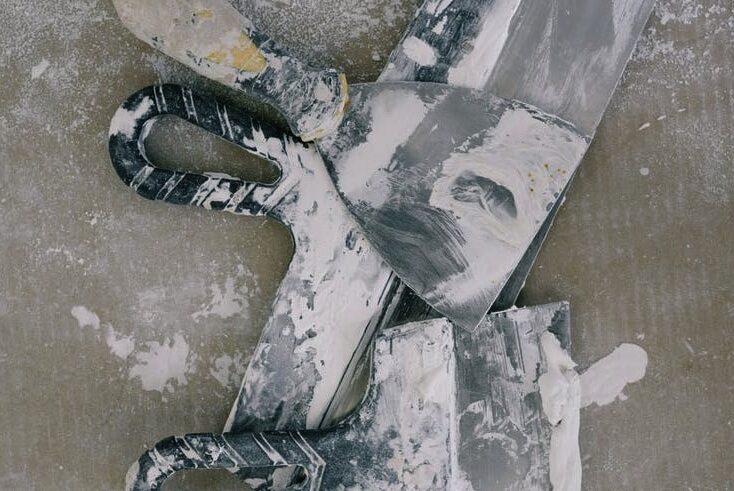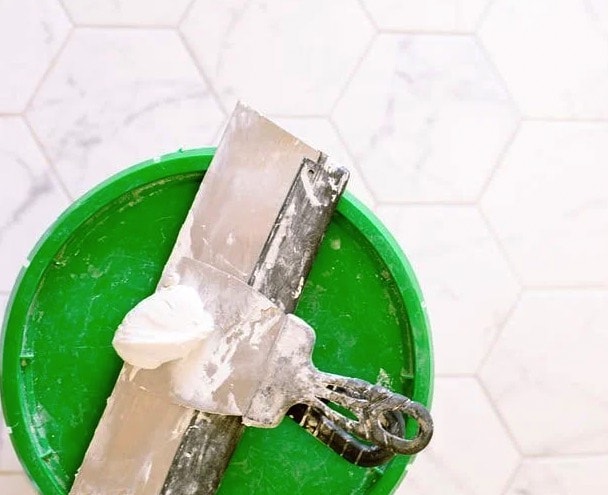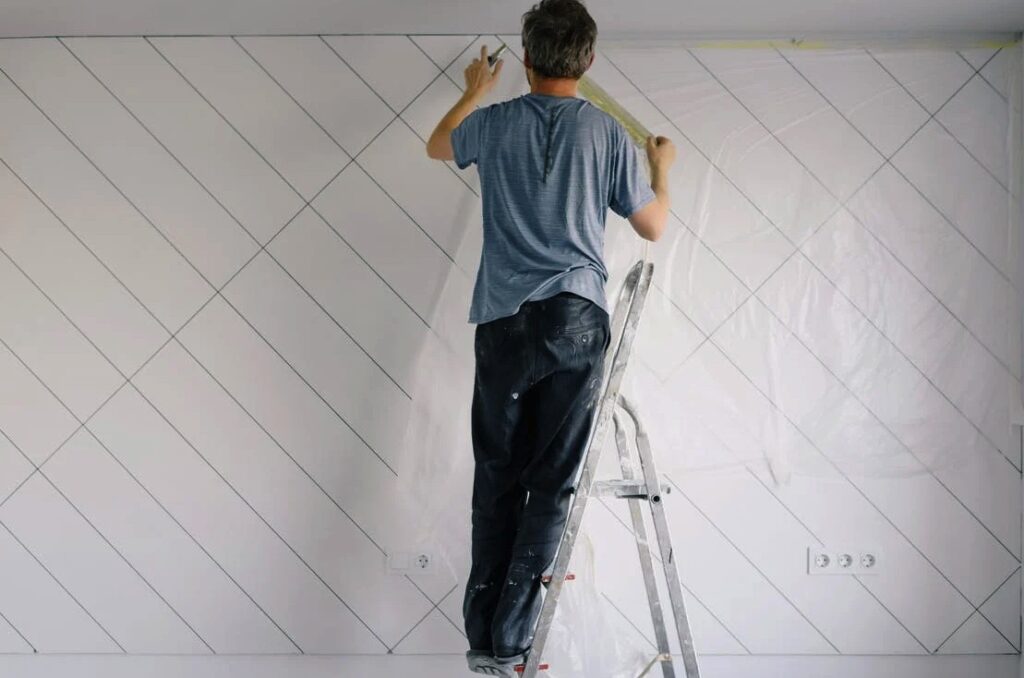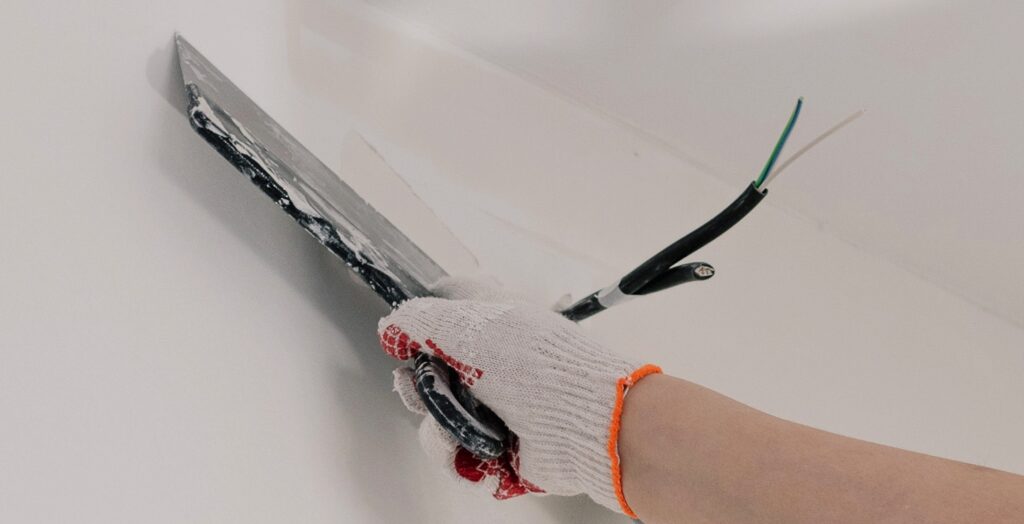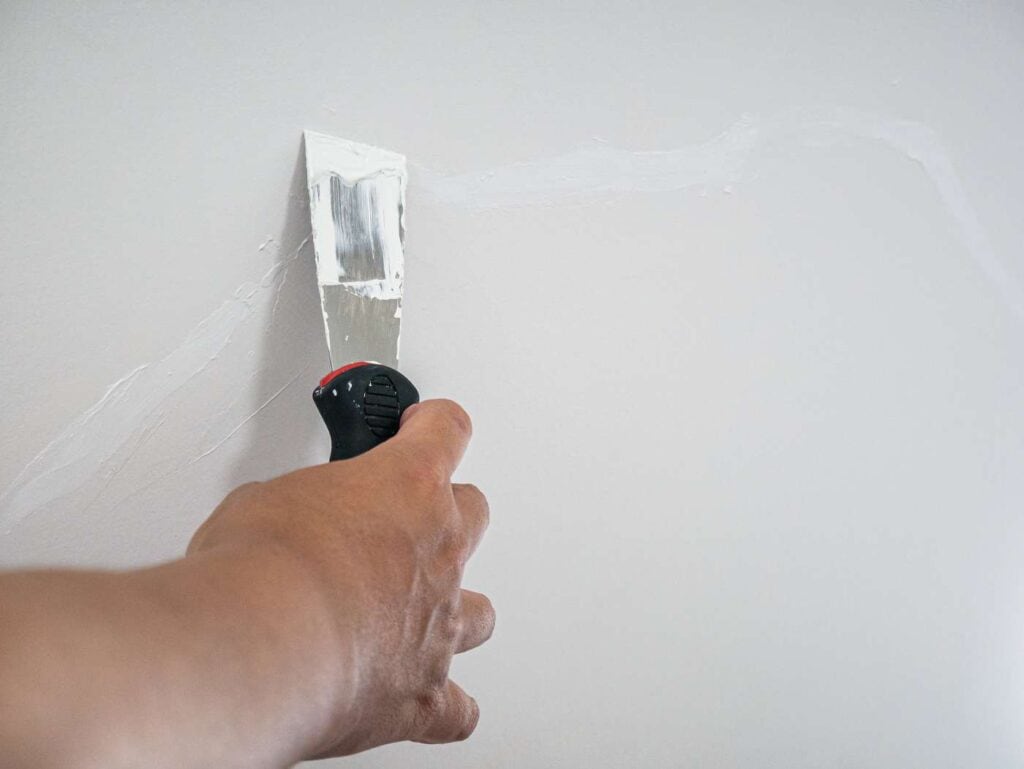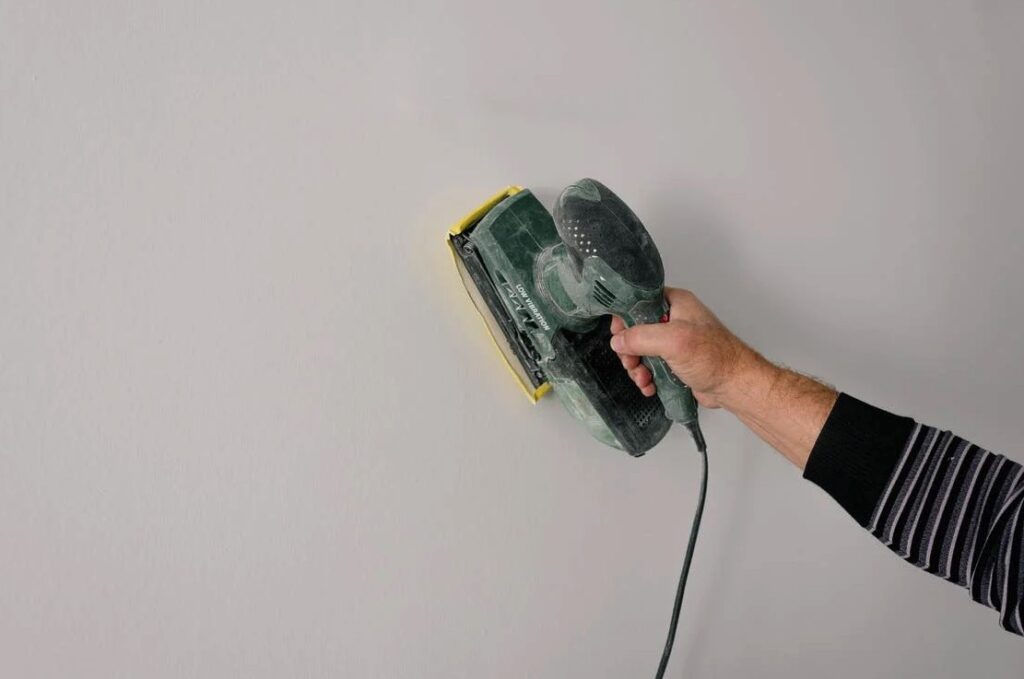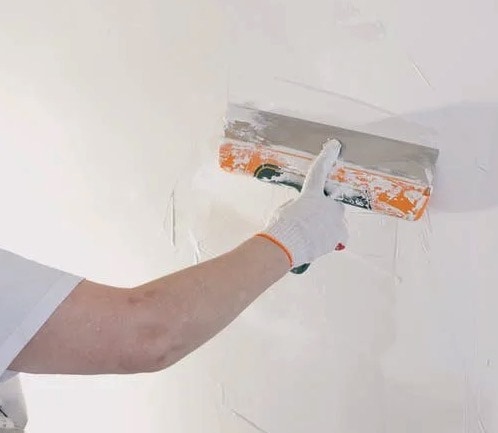This guide on the price to plaster a room has all the information, costs, as well as other factors you need, whether you're plastering an older home with extensive damage, a new home with minor holes, or a recently constructed addition.
How Much Does it Cost to Plaster a Room in Australia?
The price tag for having a room plastered in Australia fluctuates based on variables such as square footage, plastering style, and location. Plastering prices in Australia typically run between $20 and $70 per square metre.
Plastering can cost anywhere from $800 to $2500 for a room that is the typical size (3.6 m × 3.6 m) and has an average ceiling height (2.4 m). This sum accounts for everything from supplies to labour to clean up.
The amount spent may also be affected by the sort of plastering needed. Drywall plastering, which is putting a prefabricated plasterboard to the walls, can be less expensive than traditional wet plastering, which entails applying a wet plaster mixture to the walls and then smoothing it out.
The complexity of the job, the location of the property, and the experience of the plasterer are all variables that can affect the final price of plastering a room in Australia.
The best way to determine how much your particular plastering project will cost is to seek estimates from multiple qualified professionals. You should also verify the plasterer's credentials by speaking with former clients and checking their references.
Plastering Methods
Wet Plastering
Plaster is applied to a surface using a trowel and a wet cement mix to produce a smooth and even finish; this technique is known as wet plastering or traditional plastering.
Multiple layers of a sand-cement-water mixture called plaster are typically used.
Wet plastering is commonly used in both commercial and domestic building projects because of the high quality and durability it provides to the final product.
This approach gives you more say over the finished look and works great for making a smooth, even surface on something that isn't perfectly flat.
However, damp plastering can be time-consuming and calls for the expertise of a plasterer to get the job done right. Plaster must adhere well to the surface and not crack or peel over time, so correct mixing and application are also crucial.
Dry Plastering
Plastering done using prefabricated plasterboard pieces is called "dry plastering," "drywall," or "plasterboard installation."
The panels have a gypsum plaster centre that is enclosed by two layers of either sturdy paper or fibreglass matting.
Panels are custom-sized before being mounted on a wooden or metal grid framework.
When compared to moist plastering, the application time and material costs of dry plastering are significantly lower, and it is also more widely used.
It's also great for leveling rough surfaces so they're ready for paint or wallpaper. However, if the area to be plastered is not flat and even, dry plastering may not be the best option and further finishing will be needed. For the pieces not to crack or sag over time, careful installation and finishing are required.
Skim Plastering
Skim plastering is a technique that involves adding a very thin coat of plaster to an already finished surface like a wall or ceiling.
Primarily, it serves to hide flaws and get surfaces ready for further treatments, such as paint or wallpaper.
Using a trowel, one or two layers of skim plaster are applied to a surface and then smoothed out to create a flat and even finish.
Because it can be put directly over previously-installed plaster or drywall, skim plastering is a fast and affordable way to update a room's aesthetic.
However, a professional plasterer is needed to get a good finish, and it might not work on surfaces that have been severely damaged. For the skim plaster to adhere well and not crack or peel over time, the surface must be thoroughly cleaned and prepped prior to application.
Rendering
Rendering is the process of applying a coating of sand, cement, and water, or a pre-mixed render product, to the exterior or interior of a structure. Rendering is applied to surfaces to prevent damage from weather and precipitation and to improve their aesthetic value.
Rendering is typically applied with a trowel or a spray machine in one or more layers, based on the desired finish.
Traditional sand-and-cement render, lime render, acrylic render, and polymer render are just some of the rendering options available. Different types of modelling have different advantages and drawbacks.
Rendering with sand and cement is the most common technique because it produces a strong and long-lasting surface. Lime render is an age-old technique that creates a porous, weather-resistant exterior that is well-suited to historic structures.
Modern structures can benefit from acrylic paint because of its adaptability and water tightness. Polymer render can be applied to a wide variety of substrates because it is lightweight and simple to use.
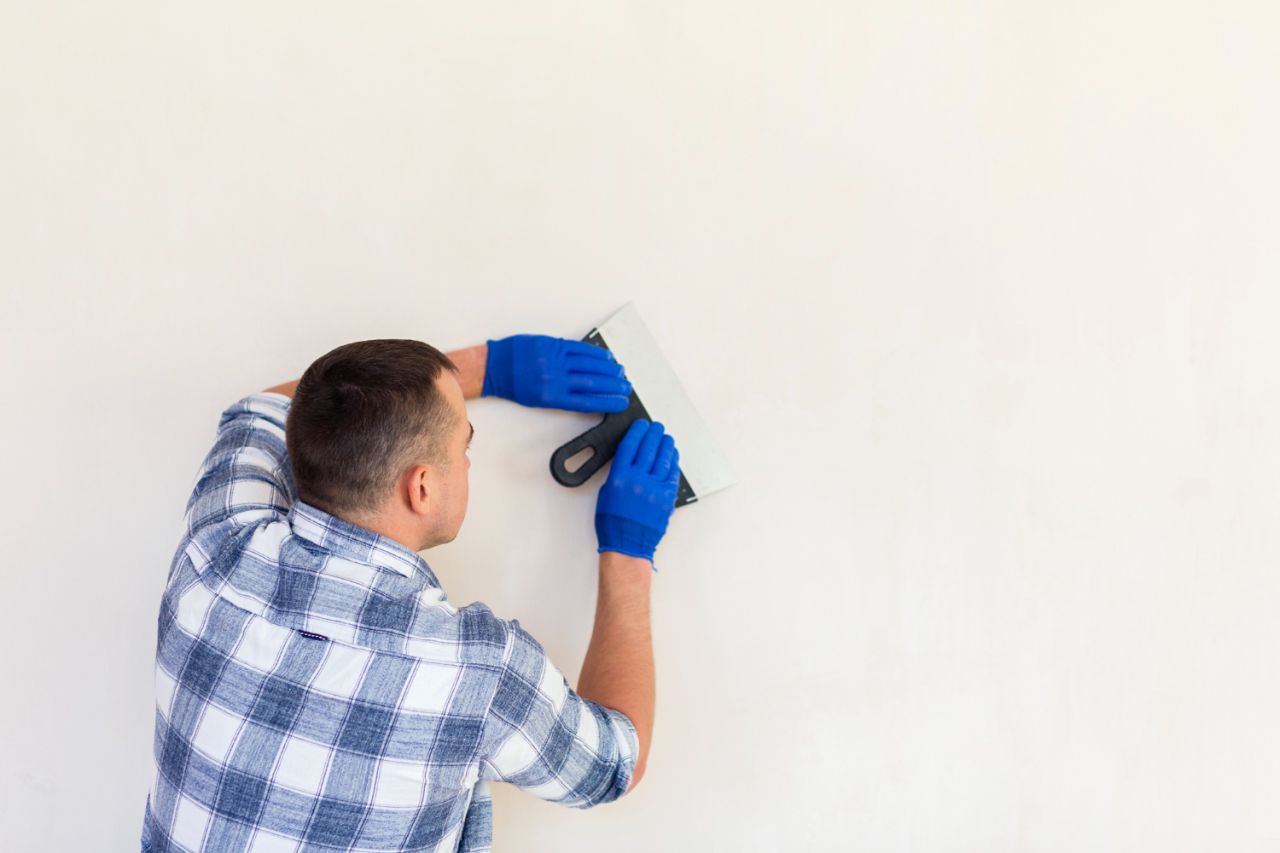
The surface must be properly prepared and the rendering must be applied correctly, both of which require the expertise of a qualified professional. Before rendering, the surface must be properly prepared by cleaning, removing any loose or damaged material, and adding a base layer or primer.
Poorly applied render, on the other hand, can cause fissures, peeling, and water damage, while properly applied render can enhance a building's aesthetics and longevity.
What factors influence the price of plastering a room?
Type of Plaster
Plastering a room can be relatively inexpensive or expensive, depending on the sort of plaster used. Due to differences in ingredients, quality, and necessary preparation, the price of plaster can range widely. Some instances are as follows:
- Classical plaster, produced from lime and sand, is known for its durability and longevity. Although it is long-lasting and airy, the application process makes this variety of plaster more expensive than others.
- Plaster produced from gypsum powder and water is called gypsum plaster and is widely used. Many homes prefer it because of how cheap it is and how simple it is to install.
- Specialized Venice plaster is used to achieve a high-end, glossy appearance. Its high quality and distinctive appearance stem from its unusual composition of marble dust and lime putty, and as a result, it is more costly than conventional plasters.
- You can make cement plaster by combining cement, grit, and water. It's a sturdy and long-lasting material, but the time and effort required to apply it can make it more costly than other plasters.
The price of plastering a room can vary depending on variables like the price of the materials used, how complicated the process will be, and how much work will need to be done beforehand. The best plaster type and related costs for your needs can be determined after careful consideration of the requirements of your project and consultation with a professional plasterer.
Size of the Room
A room's tiling price will vary greatly depending on its dimensions.
The price tag will go up because more supplies and man-hours will be needed to complete a project of this scale.
Larger spaces may also necessitate more time and effort spent on set-up, such as rearranging furnishings or covering floors and other surfaces, driving up the price.
However, smaller areas may cost less to plaster because less material and fewer workers are needed.
It's essential to remember that the time and effort needed to plaster a room can be affected by its complexity in terms of design and the number of corners and angles. The final price of plastering a room will depend on a number of variables, room size being just one of them.
Difficulty of Access
Plastering a space can get pricey if it's hard to get to the walls. Plastering a room with a high ceiling or a room with restricted entry spots may necessitate the use of specialised equipment or techniques.
Since more time and effort will be needed to complete the task, the total cost of the project may rise as a result.
Also, the price may change depending on how accessible the room is; if it's in an attic or crawl space, for example, more time and energy will be needed to move materials and tools there.
However, if the room is close to the ground level, plasterers may be able to complete the job for less money because it will take them less time. The total price of plastering a room will be based on several variables, including the accessibility of the area to be covered.
Time
The total price tag might go up or down depending on how long it takes to plaster a space.
In most cases, the cost increases alongside the duration of the project. This is because the price of plastering is usually calculated based on the amount of time it takes to finish the project.
In addition, the expense of a project can increase due to additional materials needed or waste produced if it takes longer to complete.
Plastering can take anywhere from a few hours to several days, based on the size and complexity of the room, the plaster being used, and the plasterer's skill level, among other variables. In order to get an accurate idea of the cost and time needed for your specific job, it is essential to get a detailed estimate from a qualified plasterer before beginning any work.
Degree of Finish
The cost of plastering a room can also be affected by the desired degree of finish. In most cases, you can expect to pay less for a skim layer or rough plastering than you would for a more elaborate finish like Venetian plaster or polished plaster.
This is due to the fact that a higher quality finish typically requires more time and skill to accomplish, which in turn can increase labour costs.
The cost of a project can rise further if it calls for uncommon or expensive materials, such as those used for particular kinds of finishes.
The plasterer will be able to give you a more accurate estimate once they know what degree of finish you're going for and what materials, equipment, and methods will be needed to get the job done.
Condition of an Existing Plaster
The expense to plaster a room can also be affected by the condition of the currently installed plaster or finish.
Adding new plastering to an existing structure may increase its cost if the current plaster or finish must be removed or repaired.
Additional preparation work may be needed to ensure a quality finish if the current surface is not level or smooth, which can also increase the cost. Instead of attempting to repair or work around the existing plaster or finish, it may be more cost-effective to remove it entirely and start over.
Your plasterer can evaluate the current surface's state and advise you on the most cost-effective strategy for achieving your desired outcome.
Why should I have my room plastered?
Making one's house into the ideal dwelling is high on many people's priority lists, but this goal isn't always accomplished by just painting and decorating. A re-plastering job may be in order if you notice any cracks or inconsistencies in your walls.
Plastering can create a smooth surface ready for painting, make rough brickwork less noticeable, insulate the space, and even be an opportunity to add decorative mouldings.
Plastering a room might be pricey, but the result is usually worth it, especially if you plan to sell the house soon.
Plastering is an expense with long-term benefits in the form of improved aesthetics, increased durability and safety, and reduced energy consumption.
Conclusion
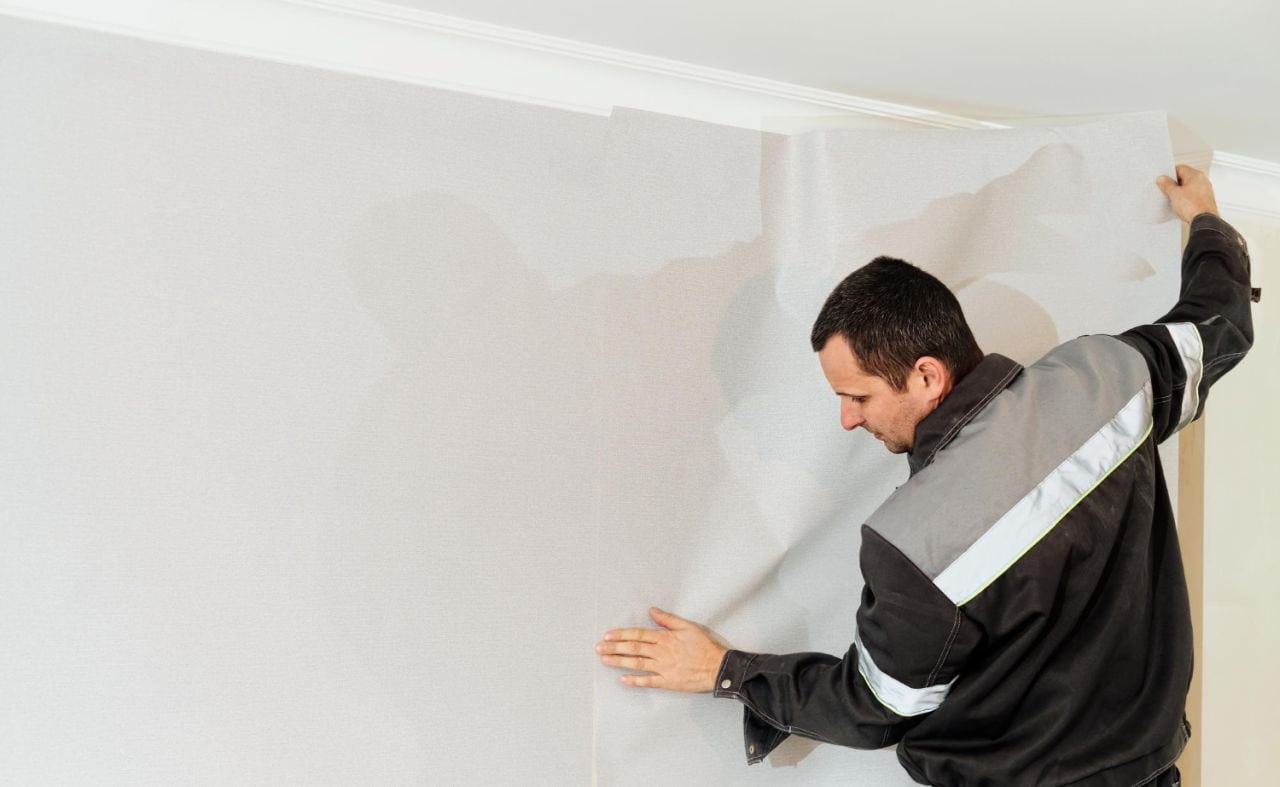
In Australia, the cost of plastering a room varies according to factors like size, plastering method, and location.
The average cost for a room with standard dimensions (3.6 m x 3.6 m) and a standard ceiling height is between $800 and $2500. (2.4 m).
Plastering with drywall, or prefabricated plasterboard, can be done for less money than wet plastering.
Plastering costs can vary widely depending on factors such as the size and scope of the job, the location of the property, and the plasterer's level of expertise.
To get an accurate price for your plastering job, it is best to get quotes from several different professionals and check the credentials of each one.
Different types of plastering include rendering, skim plastering, wet plastering, and dry plastering. Because of its high quality and durability, wet plastering is frequently used in commercial and residential building projects alike.
Dry plastering, in which prefabricated plasterboard pieces are used, requires much less time to apply and costs much less overall. Adding a thin layer of plaster over a completed surface is known as skim plastering.
Rendering is the process of protecting and beautifying the exterior or interior of a building by applying a coating made of sand, cement, and water, or a pre-mixed render product.
Content Summary
- This guide on the price to plaster a room has all the information, costs, as well as other factors you need, whether you're plastering an older home with extensive damage, a new home with minor holes, or a recently constructed addition.
- The price tag for having a room plastered in Australia fluctuates based on variables such as square footage, plastering style, and location.
- Plastering prices in Australia typically run between $20 and $70 per square metre.
- Plastering can cost anywhere from $800 to $2500 for a room that is the typical size (3.6 m × 3.6 m) and has an average ceiling height (2.4 m).
- This sum accounts for everything from supplies to labour to cleanup.
- The amount spent may also be affected by the sort of plastering needed.
- Drywall plastering, which is putting a prefabricated plasterboard to the walls, can be less expensive than traditional wet plastering, which entails applying a wet plaster mixture to the walls and then smoothing it out.
- The complexity of the job, the location of the property, and the experience of the plasterer are all variables that can affect the final price of plastering a room in Australia.
- The best way to determine how much your particular plastering project will cost is to seek estimates from multiple qualified professionals.
- You should also verify the plasterer's credentials by speaking with former clients and checking their references.
- Plaster is applied to a surface using a trowel and a wet cement mix to produce a smooth and even finish; this technique is known as wet plastering or traditional plastering.
- Wet plastering is commonly used in both commercial and domestic building projects because of the high quality and durability it provides to the final product.
- However, damp plastering can be time-consuming and calls for the expertise of a plasterer to get the job done right.
- Plaster must adhere well to the surface and not crack or peel over time, so correct mixing and application are also crucial.
- Plastering done using prefabricated plasterboard pieces is called "dry plastering," "drywall," or "plasterboard installation."
- When compared to moist plastering, the application time and material costs of dry plastering are significantly lower, and it is also more widely used.
- It's also great for leveling rough surfaces so they're ready for paint or wallpaper.
- However, if the area to be plastered is not flat and even, dry plastering may not be the best option and further finishing will be needed.
- For the pieces not to crack or sag over time, careful installation and finishing are required.
- Skim plastering is a technique that involves adding a very thin coat of plaster to an already finished surface like a wall or ceiling.
Frequently Asked Questions About Plastering
Exterior walls are best plastered with cement plaster due to its resistance to moisture, which helps to shield the wall from the effects of climate change and pollution. In addition, cement plaster's durability makes it a great option for both exterior and interior applications.
In order to achieve a professional-looking sheen, you'll need to apply at least two coats. After the second coat has dried, check for obvious grooves and indents; if there are any, trowel on a third.
Plastering work often has issues like blistering, cracking, efflorescence, flaking, peeling, popping, softness, and uneven surfaces. As soon as these plastering flaws are spotted, they must be fixed.
Ventilation, temperature, and humidity levels must all be taken into account to guarantee productive work environments. Plaster should be applied in temperatures between 60 and 70 degrees Fahrenheit (at least 55 degrees Fahrenheit) and relative humidities that correspond to normal drying conditions.
Preventative measures include selecting appropriate materials and following standard construction procedures, as well as proper preparation and cleaning of the wall surface. Plasterwork is less likely to delaminate when the wall surface is clean and properly prepared for the application of the plaster.
